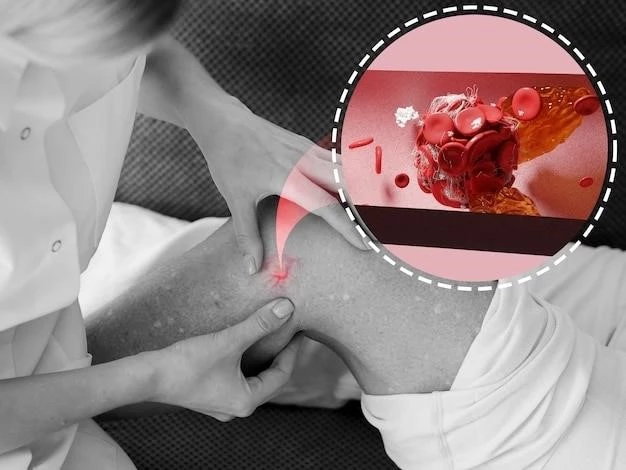Introduction to X-Linked Ichthyosis
Recessive X-linked ichthyosis, also known as steroid sulfatase (STS) deficiency, is a genetic disorder affecting mainly males. It causes dry, thickened, fish scale skin.
X-linked ichthyosis, also known as steroid sulfatase deficiency, is a genetic disorder that primarily affects males, resulting in dry, thickened, fish scale-like skin due to mutations in the STS gene. This condition presents at birth or in early infancy, leading to skin scaling on the extremities and trunk.
Definition and Overview
X-linked ichthyosis is a genetic disorder primarily affecting males, leading to dry, thickened, fish scale-like skin due to STS gene mutations.
Genetic Mutation
X-linked ichthyosis is caused by mutations in the STS gene located on the X chromosome, leading to the deficiency of the steroid sulfatase (STS) enzyme. This genetic anomaly results in the characteristic skin manifestations of the condition.
Inheritance Pattern
X-linked ichthyosis follows an X-linked recessive pattern, meaning the mutated gene responsible for the condition is located on the X chromosome. Since males have one X chromosome, a mutation in that gene can lead to the development of X-linked ichthyosis.
Symptoms and Clinical Presentation
X-linked ichthyosis mainly affects males, causing dry, thickened, fish scale-like skin primarily on the extremities, neck, trunk, and buttocks.
Skin Manifestations
The skin manifestations of X-linked ichthyosis include dry, thickened, fish scale-like skin primarily affecting the extremities, neck, trunk, and buttocks. Typically, the face, scalp, palms of the hands, and soles of the feet are spared from these scales.
Extracutaneous Associations
Extracutaneous associations of X-linked ichthyosis may include corneal opacity and cryptorchidism. This genetic disorder primarily affects males and can impact areas beyond the skin, leading to additional health considerations.

Diagnosis and Differential Diagnosis
X-linked ichthyosis diagnosis involves clinical evaluation and may include genetic testing to confirm STS gene mutations.
Clinical Evaluation
Clinical evaluation for X-linked ichthyosis involves a thorough examination of the skin, particularly looking for dry, thickened, fish scale-like patches primarily on the extremities, neck, trunk, and buttocks. Additionally, genetic testing may be recommended to confirm the presence of mutations in the STS gene.
Laboratory Tests
Laboratory tests for X-linked ichthyosis may involve genetic testing to identify mutations in the STS gene, confirming the diagnosis. Additionally, lipid metabolism anomalies due to inactivating mutations or deletions in the STS gene may be assessed through specialized testing.
Treatment and Management
Treatment for X-linked ichthyosis may involve moisturizing creams, emollients, and keratolytic agents to help manage skin symptoms.
Medications and Topical Therapies
Medications and topical therapies such as moisturizing creams, emollients, and keratolytic agents are commonly used in the treatment of X-linked ichthyosis to alleviate skin symptoms and improve skin texture.
Patients with X-linked ichthyosis may benefit from supportive care measures focusing on skin hydration, gentle exfoliation, and management of associated symptoms to improve their quality of life and skin texture.
Supportive Care
Supportive care for X-linked ichthyosis may involve skin hydration, gentle exfoliation, and symptom management strategies to improve quality of life.
Potential Complications
Potential complications of X-linked ichthyosis may include corneal opacity and cryptorchidism, which are extracutaneous associations of the condition. These complications can impact the overall health and well-being of affected individuals.
Long-Term Outlook
The long-term outlook for individuals with X-linked ichthyosis varies, with many experiencing improvements in skin symptoms with proper management. Regular skincare, moisturization, and monitoring for potential complications can contribute to maintaining skin health and overall well-being over time.
Research and Advances
Recent studies on X-linked ichthyosis provide insights into the genetic mutations, clinical manifestations, and potential treatments for this rare genetic disorder.
Recent Studies on X-Linked Ichthyosis
Recent studies on X-linked ichthyosis focus on genetic mutations, clinical manifestations, potential treatments, and insights into the management of this rare genetic disorder affecting primarily males.
Emerging Treatments and Therapies
Emerging treatments and therapies for X-linked ichthyosis are being explored to address the management of skin symptoms, including potential advancements in genetic therapies and targeted interventions aimed at improving the quality of life for individuals affected by this condition.

Impact on Quality of Life
The impact of X-linked ichthyosis on quality of life may include psychological and social effects due to skin manifestations.
Psychological and Social Effects
X-linked ichthyosis can have psychological and social effects due to the visible skin manifestations, potentially impacting the individual’s self-esteem and interactions with others. Support and understanding from family, friends, and healthcare providers are crucial in managing these aspects of the condition;
Support Resources and Organizations
Patient support groups and educational resources provide valuable assistance to individuals with X-linked ichthyosis for managing the condition and gaining insights into treatment options.
Patient Support Groups
Patients with X-linked ichthyosis can benefit from joining patient support groups that provide valuable resources, information, and community support for individuals navigating the challenges of living with this genetic skin disorder.
Educational Resources
Educational resources on X-linked ichthyosis provide detailed information on the condition, its management, genetic aspects, and support services available for individuals and families affected by this rare genetic disorder.
Conclusion
X-linked ichthyosis, a rare genetic disorder primarily affecting males, presents challenges related to skin manifestations. Understanding the disease, seeking appropriate treatments, and accessing support resources can improve the quality of life for individuals with this condition.
